“], “filter”: { “nextExceptions”: “img, blockquote, div”, “nextContainsExceptions”: “img, blockquote”} }”>
Kettlebells have come a long (long) way since their humble origins as counterweights for dry good sales at Russian open-air markets more than three centuries ago. Shined and streamlined for today’s fitness buff, these simple implements — a rounded weight with a sturdy handle attached — are a go-to for anyone looking to upgrade the intensity and effectiveness of their workouts. The key is to learn how to take full advantage of their perks.
“Kettlebells are especially valuable for targeting the legs,” says Denise Cervantes, personal trainer, group health instructor, certified Level 1 USA Weightlifting coach, and a sports performance and fitness specialist at Herbalife Nutrition. ‘The handle offers unique angles of resistance and slightly less awkward positioning options as compared to dumbbells for everything from squats to deadlifts to lunges.”
The Lower-Body Kettlebell Routine
The following is one of Cervantes’ favorite lower-body sessions: a five-move standard workout, in which you’ll complete three sets of 15 reps of each exercise, starting with that aforementioned deadlift and finishing with a walking lunge that gets your whole body in on the action. Rest only long enough between each set to catch your breath, anywhere from 15 to 45 seconds.
| Exercise | Sets | Reps |
| Kettlebell Stiff-Legged Deadlift | 3 | 15 |
| Russian Swing | 3 | 15 |
| Goblet Squat | 3 | 15 |
| Single-Arm Snatch | 3 | 15 |
| Single-Arm Overhead Walking Lunge | 3 | 15 |
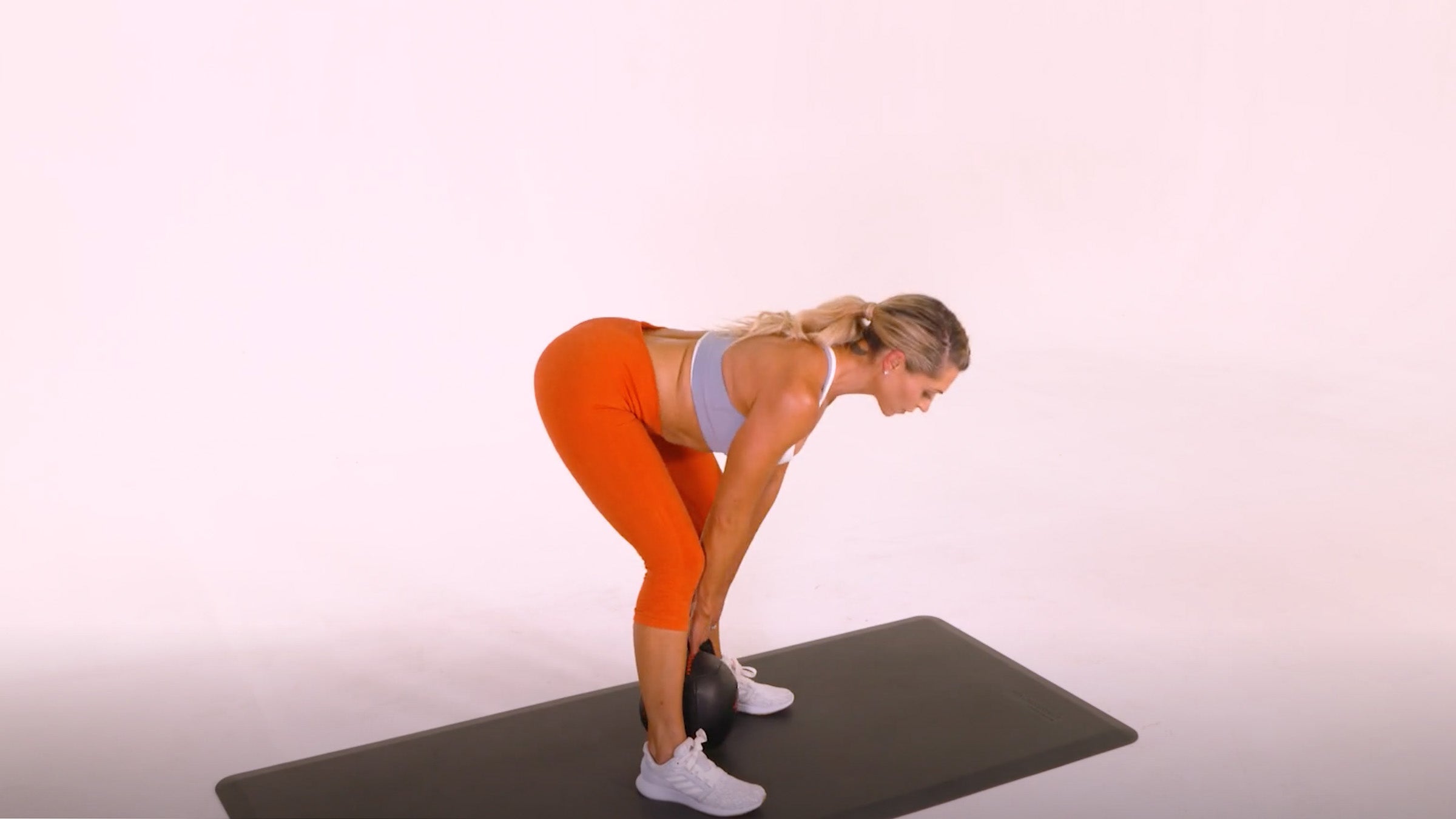
Kettlebell Stiff-Legged Deadlift
Grasp a kettlebell with both hands, allowing it to hang in front of your hips with your elbows extended but not locked. With your chest out, back flat and eyes focused forward, hold the kettlebell at your hips while shifting your hips back, with your knees slightly bent, lowering the weight between your knees toward the floor. Once it touches down, reverse the motion, extending your hips and knees as you bring the kettlebell up along your body to a standing position. “Do not let your shoulders roll forward at any point,” Cervantes adds.
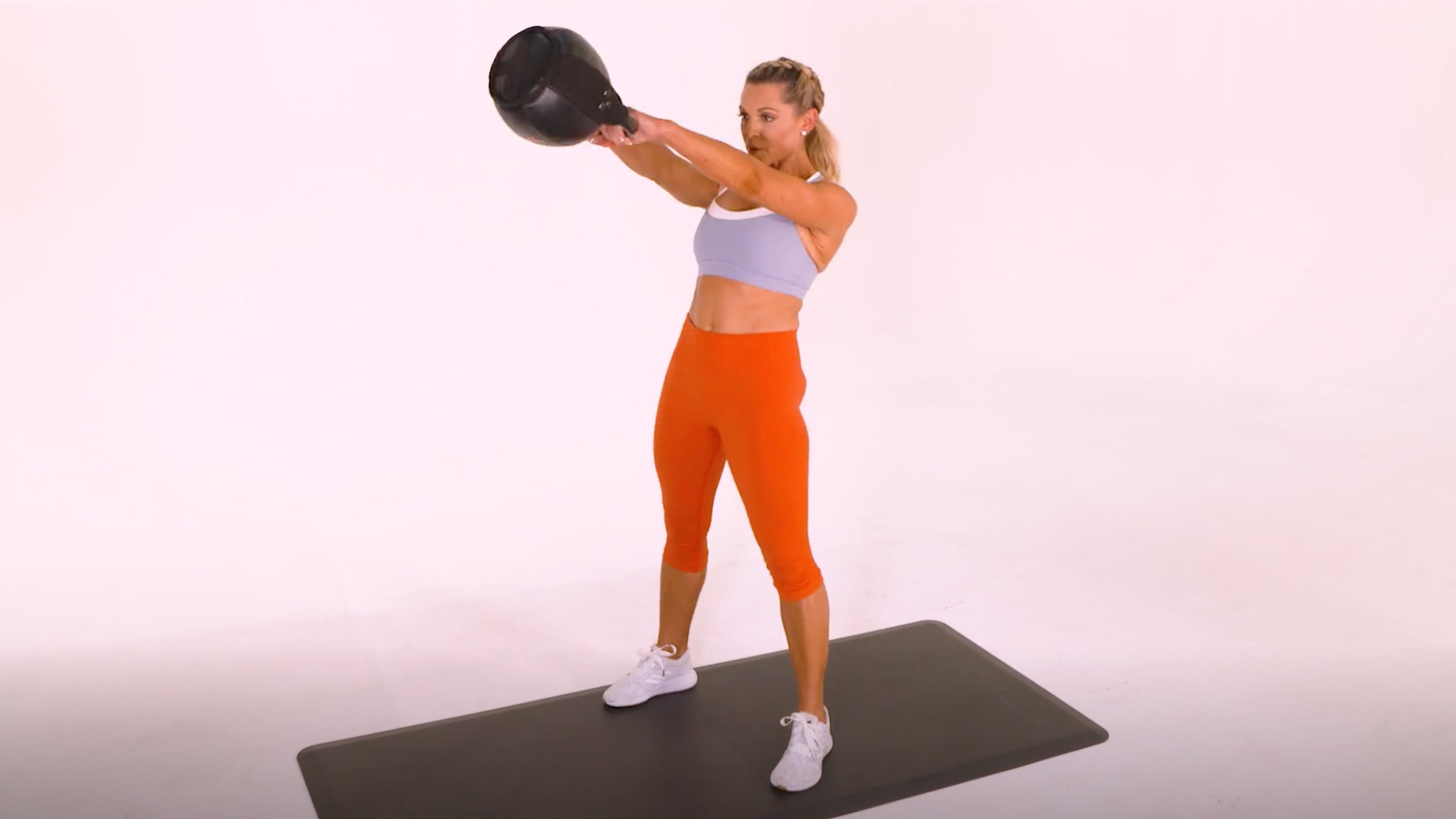
Russian Swing
Start with your feet set shoulder-width or a little wider than hip-width apart. Keep your knees slightly bent and your torso tight and straight by bracing your core throughout. Gripping a kettlebell with both hands, let it hang between your legs. Initiate the swing by bending your knees and hinging at your hips — your arms will travel under you and the kettlebell will swing back behind your body underneath your glutes. Next, swing the kettlebell up and out in front of you as you straighten your legs and shift your hips slightly forward to help drive it up. At the top, your arms will be outstretched in front of you and the kettlebell will “hover” at about shoulder height. In one continuous motion, allow the weight to come back down through your legs as you bend your knees to position yourself for the next rep.
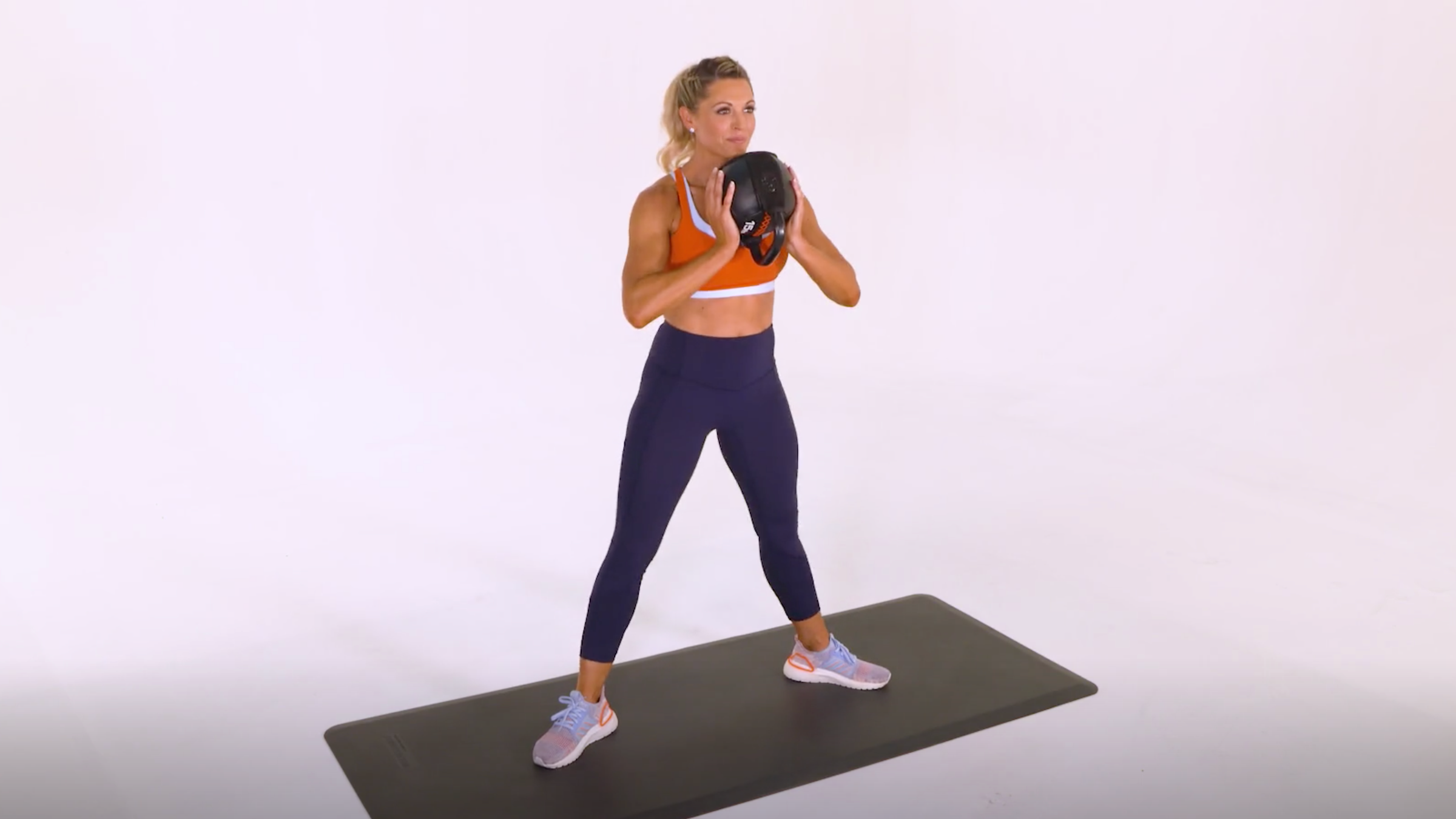
Goblet Squat
Take a stable, wide stance with your feet set just outside shoulder width, and hold a kettlebell close to your chest with the handle just under your chin, grasping it with both hands, one on each side of the handle. From here, drop your hips and bend your knees to squat straight down until your elbows contact your knees and your thighs are at least parallel to the floor. Your torso should remain upright and your back flat, maintaining the natural curve of your spine as you squat. To stand back up, drive powerfully through your heels as you extend your hips and knees.
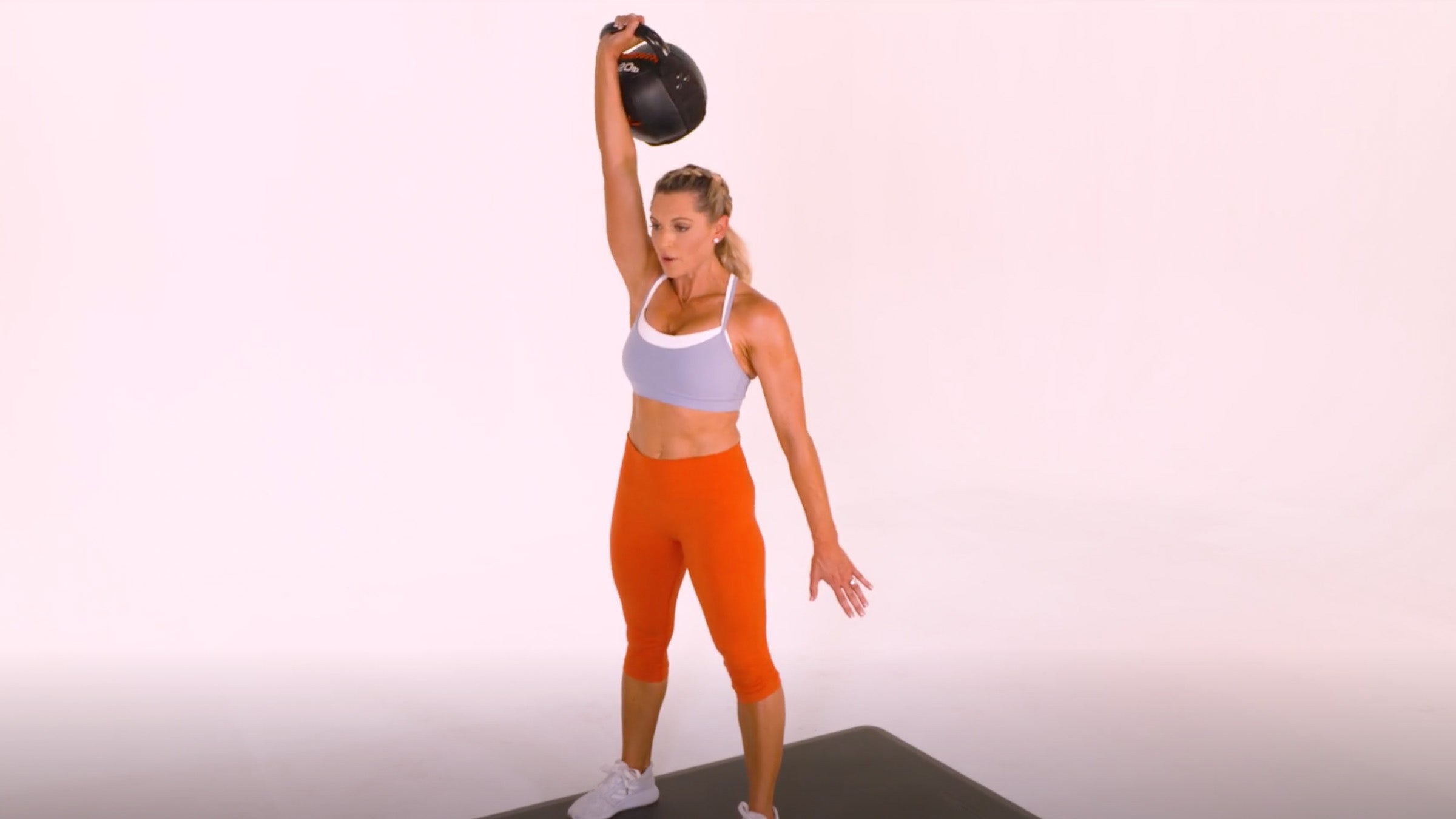
Single-Arm Snatch
Place a kettlebell on the floor and stand astride it, feet shoulder-width apart. Drop your hips into a squat, bending your knees and lowering your hips with your core tight, and grasp the handle in one hand. In one continuous motion, drive out of the squat position to pull the kettlebell off the floor, first bending your elbow as you bring the weight to shoulder level and then, using the momentum you’ve generated, extending your arm straight up overhead toward the ceiling, where the kettlebell should settle onto the backside of your wrist as your palm faces forward. Reverse the sequence to lower the weight back to the floor. You can repeat for reps on one side before switching to the other arm, or alternate arms rep to rep.
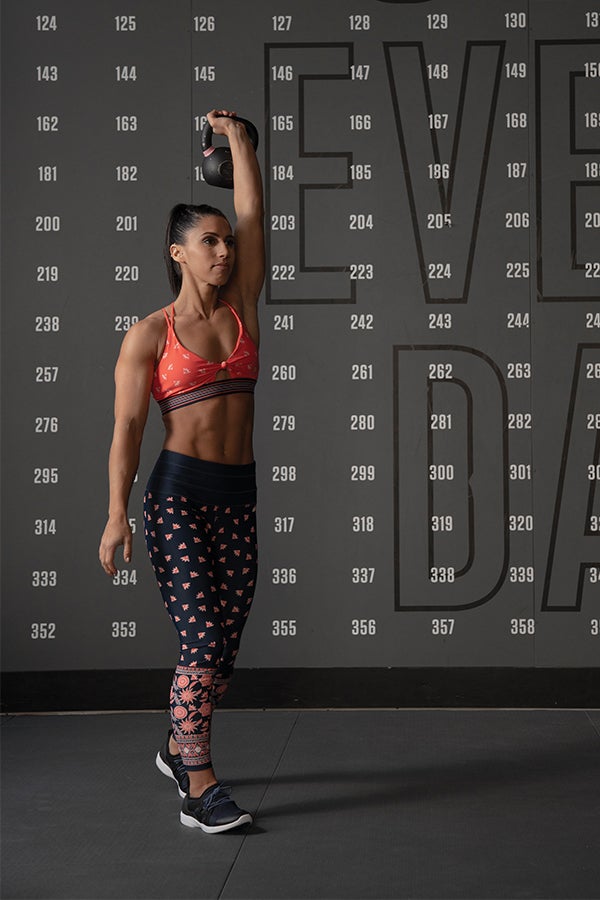
Single-Arm Overhead Walking Lunge
Hold a kettlebell in one hand and lift it straight overhead so that your upper arm runs right alongside your ear — that’s where it will remain for the duration of your lunges. Now step forward with one foot and bend both knees to lower your torso toward the floor, making sure your front knee doesn’t pass your toes at the bottommost position. Stop just short of your rear knee touching the floor, then drive through the heel of your front foot while bringing your rear leg forward until you reach a standing position. Then step with the opposite leg into a lunge, repeating the pattern. Continue alternating lunges down the floor for 15 reps, then switch arms and repeat for 15 more reps. “Keep your upper body braced and torso upright throughout,” Cervantes says. “Don’t lean to the side in an effort to try and counterbalance the weight.”
